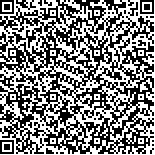下载中心
优秀审稿专家
优秀论文
相关链接
摘要

在热红外遥感中,大气下行辐射效应很难处理,原因是地表双向反射分布函数很难精确描述。因此常见的处理方法是在如下2个假设前提下对该项作做简化计算:一是假设地表反射为朗伯体特性,二是大气下行辐射在半球空间内取常数。该文提出了一种在地表为非朗伯体、大气下行辐射为非各向同性等一般条件下近似计算大气下行辐射效应的方法。通过数值模拟表明:(1)所采用的方法可以在放弃2个假设的前提下,更精确地计算热红外大气下行辐射效应的数值,计算精度比2个假设前提下的计算方法至少提高20.53%;(2)该方法所带来的误差是大气模式、遥感器视角和通道的函数。其中,通道4的相对误差比通道5大,同一通道中模式5的相对误差最大,但最大可能相对误差不到8%,且随扫描角的增大而减小;(3)大气下行辐射效应项占总辐射亮度值之比例在±30°视角范围内一般不超过4%.
In the field of thermal infrared remote sensing, it is very difficult to calculate the surface reflected atmospheric downward radiance effect because the precise bi directional reflection distribution function can not be easily described. The simplicity is therefore, often used as a only way to deal with that problem under two assumptions: one is the Lambertian reflection of the surface, another is the isotropic downward thermal radiance of atmosphere. This paper puts forward a new method to calculate the effect under the general conditions which are non Lambertian surface and anisotropic atmospheric downward thermal radiance. Simulations show: (1) The method described in this paper can provide more precise calculation of this effect, and the accuracy improved at least 20.53%; (2) The relative error from this method is dependent on the atmospheric model, the scanning angle and channel. The relative errors in the channel 4 are higher than those in channel 5, and they decreases with the increase of scanning angle. The maximum relative error is less than 8%; (3) The amount of surface reflected atmospheric downward radiance effect is 4% less than the total value of radiance received by sensor at 30 degree of scanning angle.

